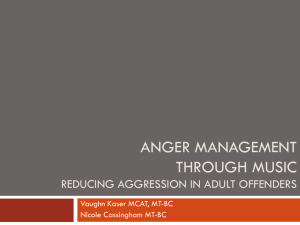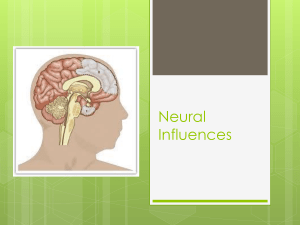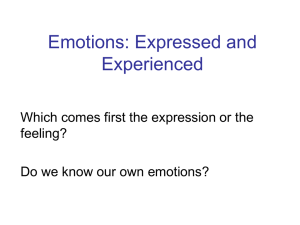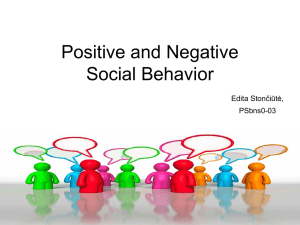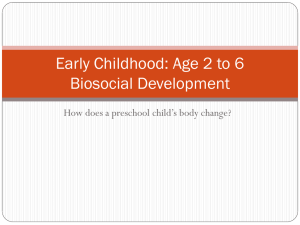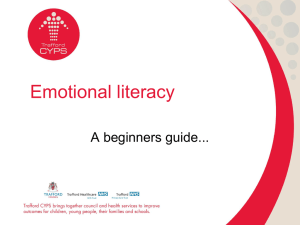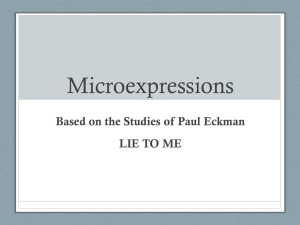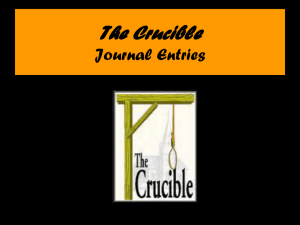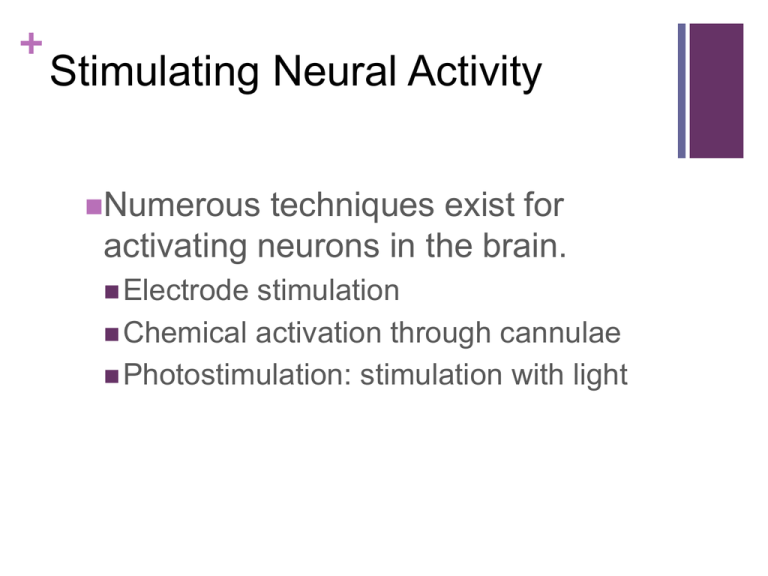
+
Stimulating Neural Activity
Numerous
techniques exist for
activating neurons in the brain.
Electrode
stimulation
Chemical activation through cannulae
Photostimulation: stimulation with light
+
“Two light-sensitive proteins from unicellular
organisms have been harnessed to rapidly
activate or silence neurons. This optical remote
control allows precise, millisecond control of
neural circuits.”
ChR2 Ion Channels – photosensitive proteins channel which depolarize the
membrane when blue light is presented.
NpHR Ion Transporter – photosensitive protein channel which hyperpolarizes
the membrane when yellow light is presented.
+
Genetic Methods
Classical and conditional knockouts (KO).
Classical KOs - the function of the gene is abolished from a very early
stage of development.
Conditional KOs - there is either a temporal restriction (gene function is
abolished at certain premeditated time windows) or a regional
restriction (no gene function in certain brain regions)
Transgenics
Foreign gene, e.g. human APP, is inserted into the genome
Knockins
Specific mutations are introduced in the gene leading to a loss of activity
of the proteins encoded by the targeted gene (although the gene
expression per se is not voided as it is in KOs).
Classical or conditional
+
Assessment of Species
-Common Behaviors
Assessment
of behaviors displayed by
all members of a species
Open-field
test – general activity
Colony-intruder paradigm – aggression
and defensive behavior
Elevated plus maze – anxiety
Social interaction
Tests of sexual behavior
+
Traditional Conditioning
Paradigms - Learning
Pavlovian
conditioning
Pairing an unconditioned stimulus with a
conditioned stimulus
Pavlov’s dogs
Copyright © 2006 by Allyn and Bacon
+ Fear Conditioning Protocol
TRAINING
Day 1
Novel Context (CS) + Tone (CS) + Footshock(US)
CONTEXT TEST
CUE TEST
Day 2
Training Context (CS)
Tone (CS)
+
Traditional Conditioning
Paradigms - Learning
Operant
conditioning
Reinforcement
and punishment
Self-stimulation
Animal works for electrical stimulation
+
Seminatural Learning Paradigms
Mimic
situations that an animal might
encounter in its natural environment
Conditioned
taste aversion
Pairing
something that makes an animal ill
(emetic) with a taste
Radial
tests
arm maze
spatial abilities
Copyright © 2006 by Allyn and Bacon
+ Seminatural Learning Paradigms
Morris
Rat
water maze – tests spatial abilities
must find hidden platform in an opaque pool
Conditioned
defensive burying – following a
single aversive stimulus delivered from an
object, rats will spray bedding at the object
Antianxiety
drugs decrease the amount of
burying behavior
+
Mind and
Brain
Emotion
Chapter 11
+
Chapter Overview
Emotions as Response Patterns
Fear
Anger, Aggression, and Impulse Control
Neural control of aggressive behavior
Role of 5-HT
Role of vmPFC
Hormonal control of aggressive behavior
Communication of Emotions
Feelings of Emotions
+
Emotions as Response Patterns
An emotional response consists of 3 types of components:
Behavioral
Autonomic
i.e., dog defending its territory might bark, growl attack
Mobilization of energy; activity of sympathetic branch of ANS
increase while parasympathetic activity decreases
Hormonal
Released from the adrenal medulla
Epinephrine and NE further increase blood flow to the muscles
Steroid hormones
Cause nutrients stored in the muscles to be converted to
glucose
+ Amgydala
Small, almond-shaped structure in the medial temporal lobe
Adjacent to hippocampus
+
Figure 11.1 The Amygdala
Ventral striatum
Dorsomedial nucleus
of thalamus (projects
to prefrontal cortex)
Ventromedial
Prefrontal cortex
+
Emotions as Response Patterns
Fear
Amygdala
Lateral Nucleus (LA) – receives
sensory information from neocortex,
thalamus, and hippocampus and
projects to basal, accessory basal,
and central nucleus of the amygdala.
Central Nucleus (CN) – receives
information from the basal, lateral,
and accessory basal nuclei and
projects to many brain regions
involved in emotional processes.
+
CN
Single most important part of the brain for the expression of
emotional responses provoked by aversive stimuli
Threatening stimuli increase neural activity and fos expression
Damage to CN reduces or abolishes a wide range of emotional
behaviors and physiological responses
Animals no longer show signs of fear
Act more tamely when handled
Stress hormones are lower
Less likely to develop ulcers or other forms of stress-induced
illnesses
Opposite is true with stimulation of CN
+
Emotions as Response Patterns
Some stimuli automatically activate the CN and produce fear
responses (loud noises)…but learning which stimuli are
dangerous is also very important
The most basic form of emotional learning is CER
Figure 11.3 Conditioned Responses
ear
Conditioned Emotional Response – classically conditioned fear
response.
+
Classical Conditioning
Physical changes responsible for CC occur in LA
Neurons in LA project to CN, projects to hypothalamus,
midbrain, pons and medulla
Responsible for behavioral, autonomic, and hormonal
components of conditioned emotional response
+
Extinction
Repeated presentation of the CS alone (without the aversive
stimuli), then the CR eventually disappears
Extinction is not the same as forgetting, new learning
Animal learns that the CS is no longer followed by an
aversive stimulus
Expression of CR is inhibited (memory for the association
b/w CS and aversive stimuli is not erased)
Inhibition is supplied by the medial prefrontal cortex
+
Research with Humans
Amygdala
is involved in human emotional
responses.
Lesions of the amygdala decrease emotional
responses.
Lesions interfere with effects of emotions on
memory.
+
Lesions of the amygdala decrease
emotional responses.
Bechara et al., (1995) and LaBar et al., (1995) found that
people with lesions of the amygdala showed impaired
acquisition of a conditioned emotional response (similar to
rats)
Angrilli et al., (1996) found that the startle response of a man
with right amygdala damage was not augmented by an
unpleasant emotion
In both cases the amygdala plays a role in the expression of the fear response
+
Medial
prefrontal cortex is involved in extinction of
conditioned emotional responses in humans.
+ Lesions interfere with effects of emotions on
memory.
When people encounter events that produce a strong
emotional response, they are more likely to remember that
event.
Cahill et al., (1995) studied a patient with bilateral amygdala
degeneration (patient SM)
+
Lesions interfere with effects of
emotions on memory.
Cahill et al., 1995
Told a story about a boy walking with mother on his way to
visit his father at work
Showed a series of slides during story
During one part of the story, boy was injured in a traffic
accident, and gruesome slides showed his injuries
Normal subjects – remember more details from the emotionladen part of the story
Patient SM – no increase in memory
+
Lesions interfere with effects of
emotions on memory.
fMRI studies confirm lesion data
Cahill et al., 1996
Ss (subjects) watch both neutral and emotionally arousing films
(scenes of violent crime), later asked to recall the films
fMRI showed increased activity of the right amygdala when the
subjects recalled the emotionally arousing films but not when they
recalled the neutral ones
Ss were most likely to recall the emotionally arousing films that
produced the highest level of activity in the right amygdala when
they were originally viewed
Isenberg et al., (1999)
Seeing words that denote threatening situations increases the activity
of the amygdala
Activation in human
amygdala…read words,
look at pictures
Ratings of emotional intensity of facial expressions by controls and
patient S.M.
+
Anger, Aggression, and Impulse
Control
Aggressive behaviors are species-typical, usually related to
reproductive behavior (defending territory) or self-defense
Threat behaviors are more common than actual attack
Threat Behavior – stereotypical species-typical behavior warning
another animal that it may be attacked; postures or gestures.
Defensive Behavior – species-typical behavior an animal uses to
defend itself against threat of another animal.
Submissive Behavior – stereotyped behavior shown by an animal in
response to threat by another animal.
Predation – attack of a member of another species; does not result in
same level of arousal
Predator not angry with its prey…it’s simply food and must be
killed
+
Figure 11.6 Neural Circuitry in
Defensive Behavior
Gregg and Siegel, 2001
•Series of studies using cats
showed that stimulation of
the PAG elicited attack and
predation
•Hypothalamus and
amygdala can influence
these behaviors through
connections with the PAG
+
Anger, Aggression, and Impulse
Control
Activity of serotonergic (5-HT) synapses inhibits aggression.
Destruction of serotonergic axons in the forebrain facilitates
aggressive attack.
Howell et al., 2007
5-HT activity in monkeys (examining 5HIAA in CSF)
High levels of 5-HIAA in CSF – increased 5-HT activity
Young male monkeys with the lowest levels of 5-HIAA showed a
pattern of risk-taking behavior, including inappropriate
aggression
46% of monkeys with low levels of 5-HIAA died (killed by other
monkeys)
Selective breeding of rats and foxes – tame animals (increased
levels of 5-HT and 5-HIAA
+
Anger, Aggression, and Impulse
Control
5-HT also play an inhibitory role in human aggression
Decreased 5-HIAA in CSF is associated with aggression and other
forms of antisocial behavior
Fluoxetine (Prozac) is a serotonin agonist and decreases
irritability and aggressiveness
People with at least 1 short allele for the 5-HT transporter have
higher anxiety and depression
Right amygdala of people carrying the short form of the 5-HT
transporter gene showed a higher rate of activity during task
(looking at faces expressing fear or anger)
+
Anger, Aggression, and Impulse
Control
Impulsive violence may be consequence of faulty emotional
regulation…in frustrating situations we can usually calm ourselves
down…probably due to the vmPFC
Ventromedial Prefrontal Cortex (vmPFC)
Includes medial orbitofrontal cortex and subgenual anterior
cingulate cortex.
+
Figure 11.9 The Location of the
Ventromedial Prefrontal Cortex
+
Anger, Aggression, and Impulse
Control
vmPFC
Plays a role in complex analyses of social situations.
Serves as interface between brain mechanisms
involved in automatic emotional responses and those
involved in the control of complex behaviors
Includes using our emotional reactions to guide our
behavior and controlling the occurrence of emotional
reactions in various social situations
Moral judgments/dilemmas, decision making
+
Phineas Gage
+
Anger, Aggression, and Impulse
Control
Hormonal Control of Aggressive Behavior
Aggression in Males
In rodents, androgen secretion occurs prenatally, decreases, and
increases again at puberty.
Inter-male aggressiveness increases at puberty.
Organizational effects – influence development of an animal’s
sex organs and brain
Effects are permanent
Activational effects - occur later in life, after the sex organs
have developed.
ie. Hormones activate the production of sperm
+ Figure 11.13 Organizational and
Activational Effects of Testosterone
on Social Aggression
Early exposure to androgens has an organizational effect that stimulates the
development of testosterone-sensitive neural circuits that facilitate male aggression
+
Anger, Aggression, and Impulse
Control
Effects of androgens on male aggression are mediated
by Medial Preoptic Area
Implanting testosterone in the MPA reinstated intermale
aggression in castrated male rats.
+
Medial Preoptic Area
See Figure 10.18
See Figure 3.21
+
Anger, Aggression, and Impulse
Control
Males attack other males, but rarely attack females
Discrimination between sexes based on pheromones
Intermale aggression was abolished in mice by cutting
the vomeronasal nerve (input from vomeronasal organ)
+
Anger, Aggression, and Impulse
Control
Hormonal Control of Aggressive Behavior
Aggression in Females
Less aggressive than males.
Aggression appears to be facilitated by testosterone.
Most rodent fetuses share their mom’s uterus with brothers and
sisters – peas in a pod
A female mouse may have 0,1 or 2 brothers adjacent to her
Being next to a male increases blood levels of androgens
prenatally
Females located between 2 males had more testosterone in
their blood and, when tested as adults, showed increased
aggression
+
Anger, Aggression, and Impulse
Control
Females of some primate species are more likely to engage
in fights around the time of ovulation
Mostly with males – likely due to increased proximity to males
Increased fighting before menstruation
Females tend to attack other females
+
Anger, Aggression, and Impulse
Control - human
Boys are generally more aggressive than girls
Small, but significant increases in aggressiveness in female
twins that shared a uterus with a male, versus another female
Girls with CAH - exposed abnormally high levels of androgens
during prenatal development
Castrated male (heterosexual and homosexual) criminals tend
to show less aggression (and sex drive)
Show increased aggression
Lack controls
Athletes that take steroids (including testosterone) tend to be
aggressive
Difficult to prove – may be that more aggressive people take steroids
+
Chapter Overview
Emotions as Response Patterns
Communication of Emotions
Feelings of Emotions
+ Basic Emotions
Finite set of universal, basic emotions
Darwin (evolved)
Universality of facial expressions
+ Emotions & Facial
Expressions
Ekman et al., (1960s)
Analyzing hundreds of films and photographs
of people experiencing real emotions
Complied an atlas of facial expressions
Dr. Cal Lightman
Emotions and Facial Expression
Six primary emotions
Surprise
Anger
Sadness
Disgust
Fear
Happiness
Naturally occurring expressions are usually
variations or combinations of basic ones
+
Additional Facial Expressions
Amusement
Contempt
Contentment
Embarrassment
Excitement
Guilt
Pride
Relief
in achievement
+ Universality of Facial Expression
Several studies
People
of different cultures make similar
facial expression in similar situations
People can correctly identify the emotional
significance of facial expressions displayed
by people from different cultures
+ Isolated New Guinea tribe
Ekman
(1971)devised a list of basic emotions to test
tribesmen of Papua New Guinea.
He
observed that members of an isolated culture
could reliably identify the expressions of emotion in
photographs of people from unfamiliar cultures
They could also ascribe facial expressions to descriptions of
situations.
Ekman
concluded that the expressions associated
with some emotions were basic or biologically
universal to all humans
+
Communication of Emotions
Facial
Expression of Emotions: Innate
Responses
Young
blind children show similar facial
expressions as normal sighted children.
+ Neural Basis of the Communication
of Emotions: Recognition
Laterality of Emotional Recognition
Right hemisphere is more important for the comprehension of
emotion.
Bowers et al., 1991 found that patients with right hemisphere
damage had difficulty producing or describing mental images
of facial expressions of emotions
George et al., 1996 had Ss listen to some sentences and identify
their emotional content.
Comprehension of emotion from word meaning increased the
activity of the PFC bilaterally, the left more than the right.
Comprehension of emotion from tone of voice increased the
activity of only the right PFC.
+
Role of the Amygdala in
Recognition
Important for emotion recognition, especially for facial
expressions (of fear).
Amygdala lesions impair ability to recognize fear expression
FMRI studies show large increases in amygdala activity when
people view photographs of faces expression fear
Affective Blindsight – ability of a person who cannot see objects
in his/her blind field to accurately identify facial expressions of
emotion without conscious perception of them.
+
Amygdala and Fearful Facial
Expressions
Adolphs et al, (2005)
Computer software that exposed only parts of either a fearful or happy
facial expression to determine what regions of the face the subjects
relied on to discriminate between expressions
Results
Control subjects consistently relied on eyes to make decisions about
expression
S.M. – did not derive information from the eyes
She did not even look at the eyes of any face, regardless of emotion
+
Facial Expressions and the Amygdala
Why the specific problem with fearful expressions?
Most expressions contain other cues that can be used for
identification
Happiness – smile
Fear – increase in size of the white region (sclera) of the eyes
+
Facial Expression and the Amygdala
Amygdala appears to be an integral part of a system that
automatically directs visual attention to the eyes when
encountering any facial expressions
+
Communication of Emotions
Perception of Direction of Gaze
Important to know if another’s gaze is directed toward you or
not.
Recognition of the direction of another monkey’s gaze involves
neurons in the superior temporal sulcus (Figure 11.22).
fMRI study confirmed monkey data
Pelphrey et al., 2003 had people watch an animated cartoon
of a face. When the direction of gaze changed, increased
activity was seen in the right STS an
+
Communication of Emotions
Role of Imitation in Recognition of Emotional Expressions
Mirror neurons – neurons located in the ventral premotor
cortex and inferior parietal lobule that respond when the
individual makes a particular movement or sees another
individual making that movement
Mirror neuron system is activated when we observe facial
movements in others and may provide feedback important for
empathy
+
Disgust
Anterior insula is essential to both detection and experienced
of disgust
Imaging data
Patient with anterior insula damage
Same area of the anterior insula was activated both when Ss
viewed expressions of disgust in others and when they smelled
unpleasant odors
Additional evidence that the insula is important in disgust
Understanding the emotions of others may require stimulating and
thus mildly experiencing emotions ourselves

